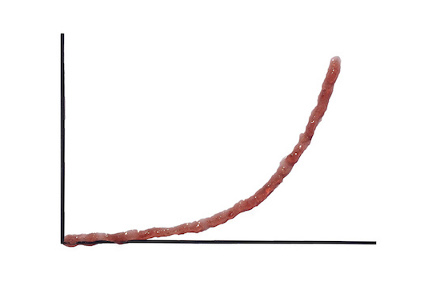In the dance between manufacturers and payers, brands that initially achieve commercial success often become more successful. There is a reason for this virtuous cycle — working to the benefit of each partner and confounding conventional wisdom about how a manufacturer may “cut in” to this dance.
Drivers of success
Before we consider how payers help brands succeed, it helps first to explain why brands succeed at all. A McKinsey analysis identified three predictors of commercial success (defined as the first five years of sales in the United States) in the specialty pharmaceutical market: (1) differentiation relative to the standard of care in terms of efficacy, safety, or convenience at launch, (2) market size of the primary indication at launch, and (3) growth of the market in the first five years after launch. A novel mechanism of action and the number of competing products at launch were not shown to be drivers of success.
The three predictive variables the McKinsey team correlated with success may be influenced by other variables not included in the model. Excluding other causal variables may overstate or understate the importance of the three variables deemed predictive. What’s more, a variable that is correlated with commercial success might not be causally related. Instead, that variable may be correlated with a variable left out of the analysis, which is causally related to success. For example, ice cream sales do not drive drownings even if the two move in the same direction, but a heat wave could explain both.
Surely, there are other drivers of commercial success. These include — but are not limited to — the ways in which manufacturers market their products to payers, providers and patients; pricing and contracting decisions; and payers’ market access decisions.
Success to the successful
Payers’ market-access decisions are impacted by an array of factors. Product differentiation relative to the standard of care — as noted in the McKinsey analysis — is one of those factors, but McKinsey constrained this variable to efficacy, safety and convenience. When payers do not perceive a product’s qualities of differentiation to be clinically significant, however, financial considerations can drive their decision making. Enter pricing and contracting considerations (the McKinsey analysts curiously excluded these dimensions of product differentiation).
Typically, successful brands with larger market shares can afford to offer payers larger rebates than less-successful brands. The larger the rebate, the larger the unit-cost savings. And the larger the market share, the larger the total cost savings. For example, a large rebate multiplied by little to no market share — remember, market share at launch is always zero — yields little to no savings to a payer. In contrast, a small rebate multiplied by a commanding market share can yield substantial savings. So, the total value of a rebate is a function of both the size of the rebate and the market share. A successful brand with a dominant market share and that offers a competitive rebate will likely be one of two preferred products. A late entrant that payers view as poorly differentiated will likely be placed on a non-preferred tier and/or stepped through the preferred product, which can limit its commercial success.
Through contracting, payers often help successful brands remain successful until patent expiration, even when the market is crowded with less-expensive alternatives. At first, this may seem to be at odds with payers’ desire to minimize their net cost. But think about this: If payers can maximize market share with the preferred brand, then they can easily shift this share to lower-cost generics when the drug goes off patent. The cost savings from generic substitution will likely dwarf the savings achieved by placing a less-costly brand on a preferred tier. More than 90% of the preferred brand’s market share can be shifted to generics within days, whereas it would take much longer for a newer preferred brand to erode the older preferred brand’s market share.
For brands, there are multiple paths to success and market-share dominance. And once they are successful — or once payers expect that a brand will become successful — payers help to grow the success with preferred access in return for rebates. This preferred access then perpetuates the brand’s success — a virtuous cycle. It is often in a payer’s financial interests to help successful brands succeed.
Success for manufacturers
Manufacturers are often perplexed why payers don’t want to dance with their newer, more attractive product and push an older, less attractive product aside. They revisit their payer marketing strategy and some make costly missteps, like investing in a budget impact analysis or an ineffective marketing campaign that either fails to recognize that payers won’t pay for convenience or misses why payers think a “significant” difference may be insignificant. Fully appreciating why payers help successful brands succeed may help manufacturers understand their non-preferred status and embrace it, allowing them to focus more productively on maximizing success within that market-access constraint. And if they are convinced their differentiation can translate into meaningful clinical or financial outcomes that catch a payer’s eye, then they should invest in real-world evidence, which is what payers really, really want.



No Comments